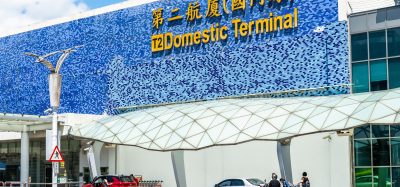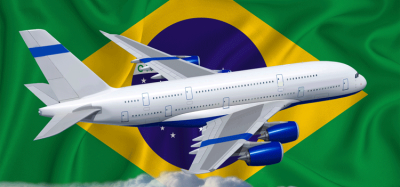The changing face of travel documentation
- Like
- Digg
- Del
- Tumblr
- VKontakte
- Buffer
- Love This
- Odnoklassniki
- Meneame
- Blogger
- Amazon
- Yahoo Mail
- Gmail
- AOL
- Newsvine
- HackerNews
- Evernote
- MySpace
- Mail.ru
- Viadeo
- Line
- Comments
- Yummly
- SMS
- Viber
- Telegram
- Subscribe
- Skype
- Facebook Messenger
- Kakao
- LiveJournal
- Yammer
- Edgar
- Fintel
- Mix
- Instapaper
- Copy Link
Posted: 16 June 2006 | Joel F. Shaw, Convenor of the International Standards Organization (ISO) Working Group responsible for Machine Readable Travel Documents (MRTDs) | No comments yet
The introduction of the new biometrically enabled Passport, or ePassport as it has become known, is well under way across the world. Joel F. Shaw explains why Face Biometric was selected as the global standard.
The introduction of the new biometrically enabled Passport, or ePassport as it has become known, is well under way across the world. Joel F. Shaw explains why Face Biometric was selected as the global standard.
Current undertakings suggest that by the end of 2006 more than 50 countries will be issuing biometrically enabled passports, a new, more secure form of travel document. Other types of travel document such as visas and official documents of identity, which can be presented in lieu of a passport or visa to enter a country, are equally being enhanced through the addition of the globally standardised face biometric details. Frontier (border clearance) controls are now being updated to take advantage of these new forms of travel and identification documents, as well as the machine-assisted identity confirmation feature that they offer.
Identity theft, illegal migration, trafficking and smuggling of people and terrorism all exploit travel documents, the systems put in place to provide them to legitimate applicants and the systems deployed to use them, such as frontier controls. Examination of the most extreme threat (terrorism) reveals that a major change has occurred requiring urgent attention by all nations. The recent terrorist events in New York, Bali, Madrid and London (UK) signal a change in modus operandi by terrorists; ‘suicide terrorism’ and ‘unconventional terrorism’ are now standard practice. Addressing such practices in modern and open societies is extremely difficult, especially when one’s goal must be to detect and prevent such events before they occur.
Although not the panacea, most experts agree that deploying a better and more comprehensively applied method of identifying persons will go a long way to realising improved detection and prevention, and thus protection.Application must be world-wide and embrace the numerous societal interface points that encompass the unique business process that is modern air travel.
While Governments, airport operators and airlines face many demands in delivering a broad range of efficient, reliable and cost-effective services in support of air travel, they are also the caretakers of a core component of a nation’s critical infrastructure and, similarly, the world’s critical infrastructure. They must therefore provide protection for air travellers while ensuring the operational integrity of this infrastructure.
Unconventional threats designed to use a nation’s critical infrastructure to create disruptions, effect economic havoc and even cause death and destruction must now be protected against.Addressing unconventional threats signals a new challenge for the collaboration between Governments, airport operators and airlines. It is widely recognised that air travel has become vital to dispensing terrorism, irrespective of whether it is domestic or internationally conceived. Terrorists must travel to train or be trained and, in most instances, to act.
Governments, airport operators and airlines are not just being called upon to protect but to deliver a more proactive preventive form of protection, since they oversee a network of vital choke points where the travelling terrorist can be detected. Hybrid systems combining smart face recognition cameras capable of successfully performing lookout detection in a crowd and traditional surveillance cameras enhanced by intelligent video processing technology are key to a more proactive preventive form of protection within an airport.
Vital contribution from international community
Governments,ACI, IATA and the International Standards Organisation (ISO), working in collaboration with the International Civil Aviation Organisation (ICAO), have made the first contribution to more proactive preventive protection by agreeing a worldwide Standard for confirming a traveller’s identity using biometrically enhanced ePassports and in so doing, activated what has become known as the eMRTD Programme (biometrically enabled machine readable travel documents). The first of several International Standards, which use face as the standardised biometric, was agreed by all 189 Member Nations of ICAO, effective 11 July 2005. Member Nations set 1 April 2010 as the deadline for all nations to issue passports in conformance with this first International Standard covering biometrically enabled travel documents.
The eMRTD Programme embraces more than just a set of globally standardised MRTDs. It embodies deployment of a range of new technologies and recommended procedures. These are designed to secure the issuance of an MRTD and to facilitate and secure the inspection of persons presenting an MRTD at frontier controls. It also provides air carriers with a means of confirming identity before a passenger boards an aircraft.
A number of immediate deadlines contained in a recent EU Regulation (reference: 15152/04, published on 10 December 2004) as well as the US Enhanced Border Security and Visa Entry Reform Act (reference: US Public Law 107-173) result in mandatory issuing of the first eMRTD (the ePassport) by 37 nations before the end of October 2006. Many other nations not bound by legislative requirements have recognised the value of issuing and inspecting eMRTDs and moved to activate their own implementation programs.
Why was face biometric chosen as the global standard?
In developing the International Standard Governments, ICAO, ACI, IATA and ISO undertook an extensive study into which biometric would best address the unique needs of the air travel process, such as travel document issuance, border clearance, security screening, self-service kiosk processing and passenger boarding. That study confirmed that face biometric satisfied considerably more requirements than all other currently available biometrics.
Two requirements singled face biometric out as being unique among currently available biometrics;
- Face biometric is the only biometric capable of supporting a ‘Lookout Check’ of a person that has not formally enrolled and provided a comparative biometric sample. Lookout Checks are critical to proactive preventive protection, especially when terrorism is taken into consideration.
- Face biometric can be confirmed by a human being with little or no training – after all, this is how we all recognise and identify other people. So even if the machine technology is unavailable for any reason or produces results that must be arbitrated before a final decision on identification can be reached, we still have the ability to confirm identity.
eMRTD programme offers comprehensive protection foundation
Governments, ICAO,ACI, IATA and ISO also recognised that an ‘eTravel Document’ containing face biometric details provides for deployment of a series of escalating security measures critical to realising a proactive preventive form of protection for the air travel business process:
- It contributes a pre-emptive protection measure in the form of new checks that can implemented by an Issuing State to prevent persons from fraudulently securing a passport or any form of travel document. This is accomplished by using the globally standardised face biometric technology to confirm the person renewing a passport as the rightful holder of the previously issued passport, and to carry out Lookout and Fraud Checks on each travel document applicant.
- It provides an immediate detection measure in the form of a face-based Lookout Check that can be implemented by any Receiving State on all persons seeking entry into the State. This new type of Lookout Check is not dependent upon the availability of the new biometric passport. It simply requires the Receiving State to install the face biometric capture technology and activate a check for persons deemed to be of concern to the State.
- It provides an escalating protection measure in the form of a positive identity confirmation check that can be implemented by a Receiving State when persons present a new biometric passport during border inspection; i.e. confirms the document presenter as the rightful holder. This measure increases in security value as more and more traditional passports are converted to the new biometric type. Although not part of the biometric program per se, ICAO has contributed an important fourth measure – it has collaborated with INTERPOL to create a mechanism whereby Receiving States can confirm if a travel document has been reported by an Issuing State as lost or stolen. This will ensure that re-use of stolen traditional passports, including stolen blank books, can be immediately detected.
Standard practices
The eMRTD Programme was not conceived solely to address concerns over proactive preventive protection and enhanced security. Facilitation across all aspects of the air travel business process was equally an objective. The use of contactless (wireless) computer chips securely integrated into travel documents for carrying, protecting and securely delivering encoded identity confirmation details, as well as non-invasive face recognition for confirming identity, ensure that this is achieved despite the complexity and incremental nature of these process enhancements.
By combining advanced warning lookout detection checks with positive identity confirmation, a more secure identity confirmation system that benefits the travelling public is created.
The eMRTD Programme has laid the foundation for proactive preventive protection with facilitation across the full business process of air travel. Many believe that it has also laid the foundation for improving facilitation and/or enhancing security in many other businesses. The next five years will be a period of concentrated change and improvement for people travelling by air and the air transportation industry as a whole. It will equally represent a period in which many other businesses realise similar improvements by building on the successes of the air transportation industry.
Joel F. Shaw
Joel F. Shaw is an internationally recognised expert in the field of Official Documents of Identity, having created the world’s first travel document readers and designed and installed modern border clearance and travel document issuance systems around the world. Mr. Shaw is also the Convenor of the International Standards Organization (ISO) Working Group responsible for development and maintenance of Standards for Machine Readable Travel Documents (MRTDs). He coordinates and provides ISO’s liaison with the International Civil Aviation Organization (ICAO). Mr. Shaw has held both positions since 1989. He is currently leading ISO’s work programme to develop concepts and specifications for next generation, biometrically empowered travel/identification documents and cards – the first being the new ePassport, machineassisted identity confirmation systems for enhanced border security and pre-enrolled border clearance machines.

















